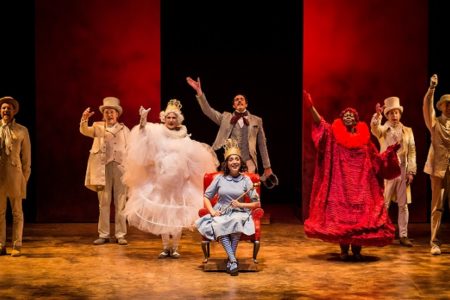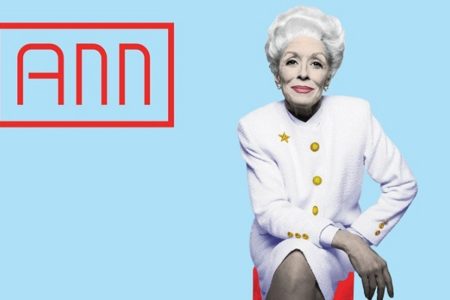This time of year, throngs of LA residents rush to get their tickets for a production of A Christmas Carol at A Noise Within (ANW)— and this Pasadena tradition is now celebrating its 11th year. ANW’s founders and Co-Artistic Directors Geoff Elliot and Julia Rodriguez-Elliott, have been enthralled with this source material since they were both theatre students at ACT. Years later, Elliot went on to create his own faithful adaptation of Dickens’ work, only using lines from the original novella. “It’s a story that still teaches us so much,” says Rodriguez-Elliott, who co-directs this show. “This is why it never gets old.”
Charles Dickens’ enduring classic A Christmas Carol paints a portrait of Victorian England that seems to evoke a bygone era. But on closer inspection, our world today shares so many of the social inequities that Dickens captured so vividly, and he himself experienced as a child. When Dickens was just eleven years old, his father was imprisoned for debt, so the young Dickens was pulled out of school and sent to work in a factory to support his family. His poverty-stricken youth influenced him profoundly, and he was determined to shine a light on this injustice. A Christmas Carol was originally conceived as a pamphlet entitled An Appeal to the People of England on Behalf of the Poor Man’s Child. Part of Dickens’ intention in A Christmas Carol was urging those with means to find the humanity to help those in need, and to remind readers that human beings were all “fellow passengers on their way to the grave.”
Those who attend ANW’s adaptation of A Christmas Carol at A Noise Within are often captivated with its beautiful stage elements, charmed by its dance and music. But inside of its theatrical wizardry, the social issues the preoccupied Dickens remain central to the storytelling. Geoff Elliott, who co-directs the production and also embodies the role of Ebenezer Scrooge, identified three examples of Victorian social issues in the play that remain incredibly relevant to current audiences as well…
- Scrooge and Cratchit: The prototype executive and employee paradigm: Scrooge pays Cratchit a pittance for his work, barely enough to provide for his family. Examples of extreme wealth have only increased over time, especially the last couple of decades. In the U.S. in 2022, top CEOs earned 399 times more than the typical worker. Across the world, the richest 1% own almost half of the world’s wealth and 26 billionaires have more wealth than 50% of the rest of the world combined. The miserly Scrooge model of unchecked corporate greed remains as pernicious as it was in Dickens’ time.
- Health care perils and the Tiny Tim dilemma: Cholera, yellow fever, scarlet fever, smallpox, typhus, whooping cough, measles, tuberculosis, and rickets were all rampant in Victorian England and it was common that children that fell sick with these diseases never reached adulthood. Most of these conditions have been largely eradicated or mitigated by modern medicine. But what has not changed is the prohibitive price of care, at least in the United States. Currently, 41% of American adults have some amount of medical or dental debt. A quarter of adults with healthcare debt owe more than $5,000, and 20% of those with debt don’t believe they will ever be able to pay it off. 17% of Americans with medical debt have lost their homes or declared bankruptcy because of that debt. So Tiny Tim’s physical vulnerability remains all-too familiar.
- The charwoman and the dangers of a frayed safety net: The charwoman is a somewhat ghoulish character in A Christmas Carol that exists inside a vision of a potential future—someone who steals from Scrooge’s corpse. She does not try to preserve a sense of humanity in someone who never saw her as human, and this theft is her only means of survival. The advent of programs like “social security” mitigated the sort of destitution found in Victorian England. However, homelessness rates have been climbing nationally by about 6% every year since 2017 and increased 38% this year in 20 major US cities. In Los Angeles, one needs simply to walk out the door to see that the social safety net is not exactly safe, and the desperation that motivates Dickens’ charwoman feels entirely believable.
Scrooge undergoes an odyssey throughout the play, guided by the Ghosts of Christmas, and his self-reflection gives the entire audience an opportunity to also absorb a sense of collective responsibility in facing social inequities, especially those that remain persistent challenges in our own society.
Although the ANW production authentically portrays Dickens’ earnest concerns for social justice, that does not mean the experience of the ANW play is bleak — far from it! Since opening on December 1, the theatre has been filled to capacity with kids and adults, classrooms on field trips, and generations of families. Scrooge changes course, from an isolated miser to an engaged member of his community. This journey makes sense to young and old, even as it presents a paradoxical truth: often the only way to find joy in our own lives is when we actively enrich the lives of others.
The singular power of this Carol is not ignoring the darker elements, but making its light shine all the brighter in contrast to the alternative. Moving from selfishness into selflessness rarely happens overnight, like Scrooge and his ghosts. This community-centered mindfulness requires repetition and renewal. Perhaps this is why people go back to see this play at ANW every year. It is not watching the Muppets or Mickey Mouse alone in one’s living room. Attending the theatre is a profoundly communal act, and when someone sits in the audience, they are gathered among members of their community who also choose to embark on this tradition together. Those who watch the play do not just see the changes in the characters onstage but can observe the impact on their fellow audience members, and—hopefully—in themselves too.
Embodying the character of Scrooge for eleven years, night after night, Geoff Elliott says this role provides a remedy for the kind of fatalism or narcissism that can creep into all our daily lives. “This journey reminds me that we are all in this together,” says Elliott. And the audience members seem all too willing to embrace the messages of this voyage too. “Fellow passengers” indeed.
A Christmas Carol is on stage at A Noise Within’s theatre on Foothill Blvd., Dec 1-Dec 24. Make this show a cherished part of your family’s holiday traditions. For more information, click here.













